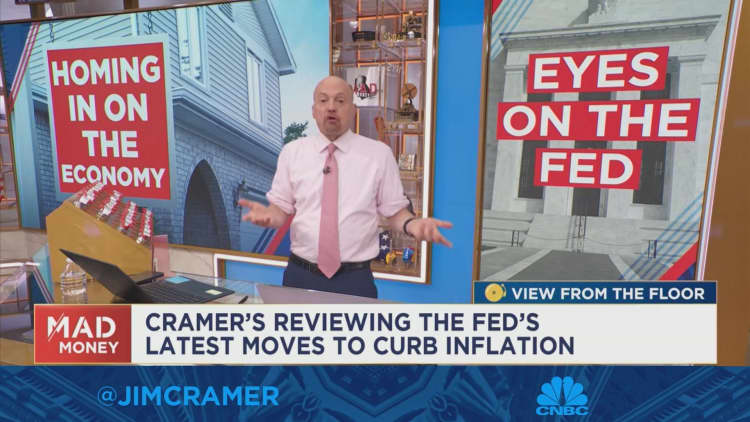Multifamily properties are among the most common types of housing that investors rely on to grow their portfolios. They provide consistent and reliable income, have relatively low vacancy risk, and typically appreciate over time.
Working with a multifamily real estate agent is smart if you are considering investing in this type of property. These professionals can help you find what you are looking for in less time and possibly help you save money during the negotiations.
Why Do I Need a Multifamily Realtor?
Not all real estate agents are experts in all property types. Some specialize in helping families find their forever homes, while others may specialize in selling homes. Agents who specialize in multifamily properties are investing experts. Some may even be involved in multifamily real estate investing themselves.
Working with an agent specializing in multifamily properties has several important benefits. First, a good agent will help you save time by narrowing your search to the properties that are good investments. Your agent will review all the multifamily home listings, determine which properties meet your criteria, and find the net operating income, rental history, financial projections, and other important information.
A multifamily property agent will also be an expert in the local market and will have connections with property owners, developers, and other investors. Your agent may also know of off-market multifamily properties that will soon be for sale, giving you a competitive advantage over other investors. An agent may also know which local property managers have the best reputations.
A good multifamily agent will also schedule tours and accompany you when you visit properties. The agent will know which questions to ask to help you make an informed buying decision. The agent will also help you conduct a thorough property analysis and evaluate investment risks and potential returns.
One of the greatest benefits of using a multifamily property real estate agent is that it could help you save money. Your agent will help you draft an offer and work on your behalf to ensure you get the best deal possible. Your agent will also arrange inspections and assist with paperwork to ensure a smooth transaction.
Understanding the Different Types of Multifamily Properties
There are several different approaches you can take with multifamily real estate investing. The best approach for you will depend on your investing experience, risk tolerance, and how quickly you want to grow your investment portfolio.
There are three types of multifamily properties, and it’s important to carefully consider the pros and cons of each type before making an investment decision.
Apartment complexes
When people think of multifamily properties, apartment complexes are often the first things that come to mind. Apartments typically have strong demand and are commonly rented by college students as starter housing, by those looking for temporary housing, and many others. Apartment complexes typically consist of two or more buildings with multiple units.
The primary advantage of this type of property is occupancy diversification. With single-family homes, for example, you won’t earn any money from a property that’s not rented. The monthly note will still be due; you may have to pay it out of pocket until you find a tenant. On the other hand, a single vacancy in an apartment complex with dozens of units may not be as financially disruptive and could help you maximize your cap rate.
An important negative of apartment building complexes for investors is that they cost significantly more than other properties, like single-family homes. You can use creative financing strategies to finance apartment building complexes, but many new investors may be intimidated by such a large investment and the ongoing maintenance requirements.
Turnkey properties
A turnkey property is any rental property that has been recently remodeled and doesn’t need any additional updating or repairs. It could be single-family homes, apartments, or something else. These properties will also have existing tenants and may be managed by a property management company. As the name implies, the property is “turnkey” for an investor.
The primary advantage of investing in a turnkey property is that the rental income begins immediately after the closing. Although all rental properties will require ongoing maintenance, major issues will most likely have been identified and repaired. The property will also not need any immediate cosmetic improvements, which is an important consideration for long-term investors.
An important negative of turnkey properties is that they may sell for a premium over other properties. They are usually sold by investors who purchased them to fix and flip for a profit. However, turnkey properties may still be great options for those who work full-time jobs and want to break into real estate investing.
Duplexes, triplexes, and fourplexes
A duplex, triplex, or fourplex is a multifamily property with 2-4 units in a single building. Duplexes have two rental units, triplexes have three, and fourplexes have four.
Many people prefer these properties because it allows them to grow their investment portfolios one property at a time, which minimizes risk. They are also ideal for those who are new to real estate investing. Instead of purchasing a large multifamily property with dozens of units, a new investor could purchase a duplex and then consider buying another one after gaining experience and confidence.
An important disadvantage of this property type is that you may end up with multiple properties that are not close to each other. Driving from one property to another to address maintenance issues or show units to prospective tenants could be inconvenient.
Do Your Research: Learn About the Neighborhoods and Choose a Location
Where you purchase multifamily units is one of the most important decisions you will make. Before you choose a property, it’s important to ensure there is a high demand for rental housing in the area and that your investment will appreciate over time.
First, it’s important to consider local demographic data and the local economy. You can use online resources to find crime rates, school ratings, and the unemployment rate, which will help you determine whether the community you are considering is one you want to invest in.
Next, visiting the community you are considering to see it in person is a good idea. Check out the local amenities to ensure they are close to the property you are considering. Also, don’t forget to explore the surrounding area to get a feel for it and to make sure it’s family-friendly.
When you visit a community, take the time to talk to some of the locals. Tell them you are considering buying property in the area and ask them if they like living there. They may give you important information you won’t get by researching online or from other sources.
Finally, you will also want to assess the local rental market by analyzing the rental demand, vacancy rates, and rent appreciation trends. It’s also important to find out if there are any planned infrastructure projects or new business developments. A new distribution warehouse or factory employing many people could dramatically increase the demand for local rentals, allowing you to increase your rates and maximize your cap rate.
How Do I Find a Good Multifamily Realtor?
Before buying a multifamily property, finding the right agent is important. The person you select will help you find the best investment property for your needs and ensure a smooth transaction. Multifamily agents are not difficult to find, and there are some simple strategies you can use to help you narrow your search.
The first thing you can do is to ask for referrals from other real estate agents. Be sure they know you are specifically looking for someone specializing in multifamily properties. After getting some recommendations, you can check out any reviews and ratings they may have received from others on online real estate platforms.
The next step is to talk to each of the agents you identified to make sure you are compatible and that they understand your investing goals. You could talk to them or arrange a short in-person meeting. Because you will be working closely with your agent, you want to make sure you are comfortable communicating with the person you select.
What Characteristics to Look for in a Multifamily Realtor?
Any real estate agent you consider should be a multifamily housing expert. Before selecting an agent, there are three important characteristics to ensure you get someone who knows the market and your investing needs.
They must be area hyper-local experts
When considering agents, ask them about their experience with multifamily investing, their track record of successful client transactions, and their knowledge of the local markets. A good agent can tell you which communities have the strongest rental demand, the best economies, and a positive long-term outlook.
They need to be qualified experts in multifamily properties
It’s also important to consider professional certifications before selecting an agent. Be sure to look for a multifamily investment property certification such as the Certified Commercial Investment Member (CCIM). This will help ensure that the agent you choose keeps up with industry changes and is committed to professional development.
They have to be trustworthy enough to care about your investment criteria
Some agents will have more experience than others. Reviewing their track records and experience will help you avoid agents who are new to multifamily property investing, work as part-time agents, or are generalists who deal with commercial real estate in addition to other property types.
FAQs
Before you select an agent, it’s important to ask the right questions to determine if an agent has the experience, connections, and expertise you need.
What questions should you ask your multifamily real estate agent?
Talking to several real estate agents specializing in the multifamily market is a great way to find someone easy to communicate with and knowledgeable about the local market. Here are some important questions to help you determine if you and an agent are a good fit.
- Do you personally invest in multifamily homes?
- How long have you lived and worked in the area?
- Can you provide references from previous clients?
- Can you recommend some good property managers?
- What strategies do you use in negotiations to get the best deals?
- Can you share information about some recent multifamily deals?
- How long have you been working as a multifamily real estate agent?
- How do you evaluate a property’s rental income, growth potential, and risks?
What is a normal commission for a multifamily real estate agent?
As a rule of thumb, commissions for multifamily real estate agents are typically 4-6% of the sale price and will vary depending on different factors. For a large real estate investment, the commission may be negotiable. It’s another important question to ask when you are considering agents. Factors that may contribute to an agent’s commission include the location of the property and its market value, the agent’s experience, and the level of service provided.
The Bottom Line
If you consider investing in multifamily properties, ensuring you work with the best agent isn’t optional. The person you choose will be a valued business partner who looks out for your interests. Your agent will work closely with you to find the right property, select the right loan type, negotiate the best deal, and do other things to ensure a smooth buying process.
Thankfully, finding your ideal multifamily real estate agent has never been easier when you use BiggerPockets’ Agent Finder. With the easy-to-use tool, you simply enter the city or zip code you are considering and your investment criteria. You will then be matched with a local agent who can help you find the best investment property for your needs.
Find an Agent in Minutes
Match with an investor-friendly agent who can help you find, analyze, and close your next deal.
Note By BiggerPockets: These are opinions written by the author and do not necessarily represent the opinions of BiggerPockets.














